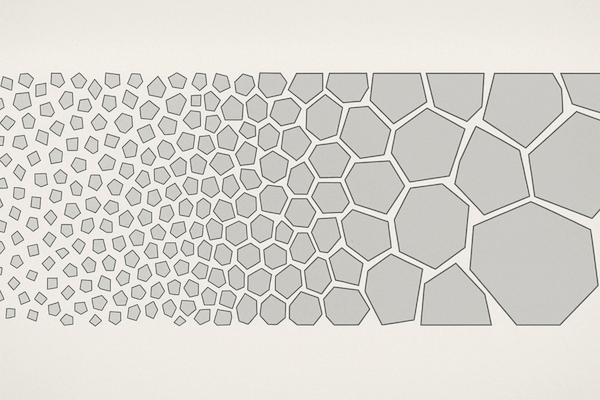
في عالم المواد والأدوات المتقدمة، يكثر استخدام مصطلح "حجم الحبيبات". قد يبدو هذا تفصيلاً لا يهتم به إلا علماء المعادن، إلا أن حجم الحبيبات يلعب دورًا حاسمًا في أداء وقوة ومتانة أدوات كربيد التنغستن المستخدمة في صناعات التعدين والتشغيل الآلي والنفط والغاز والتصنيع الدقيق.
إذن، ما هو حجم الحبيبات، ولماذا يجب أن نهتم به؟
ما هو حجم الحبوب؟
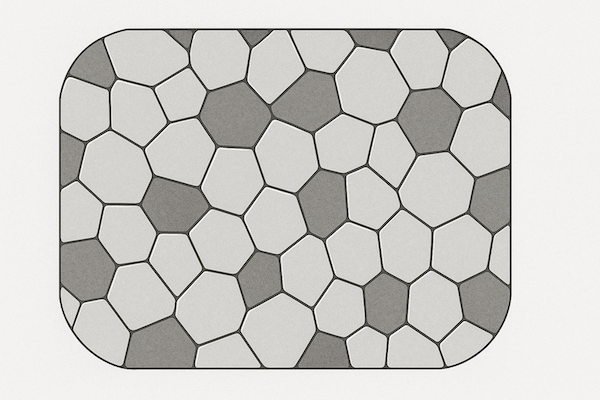
يشير حجم الحبيبات إلى متوسط حجم جزيئات كربيد التنغستن (WC) في مادة كربيد مُلَصَّقة. ترتبط هذه الجزيئات ببعضها البعض بإحكام بواسطة رابط معدني (عادةً ما يكون من الكوبالت أو النيكل)، مما يُشكِّل مادة مركبة ذات خصائص استثنائية. صلابة و قوة.
يتم قياس أحجام الحبوب عادةً بالميكرون (μm) ويتم تصنيفها على نطاق واسع إلى:
فائق الدقة (< 0.5 ميكرومتر)
دون الميكرون (0.5 – 1.0 ميكرومتر)
ناعم (1 – 2 ميكرومتر)
متوسط (2 – 6 ميكرومتر)
خشن (> 6 ميكرومتر)
كيف يؤثر حجم الحبيبات على أداء أداة كربيد التنغستن
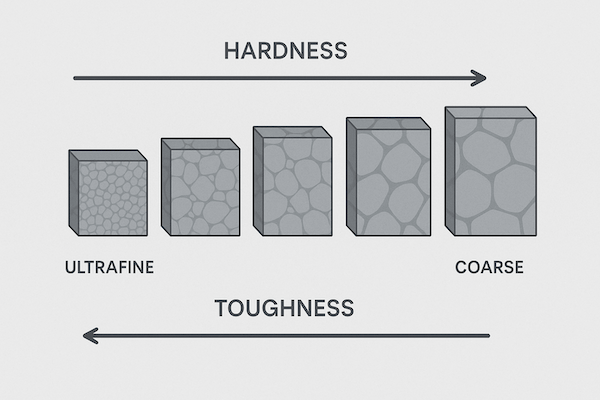
يؤثر حجم الحبيبات بشكل مباشر على الخصائص الميكانيكية للمادة، وخاصة الصلابة، مقاومة التآكل, صلابة، والسلوك الحراري. إليك الطريقة:
| حجم الحبوب | صلابة | صلابة | مقاومة التآكل | التطبيق النموذجي |
|---|---|---|---|---|
| فائق الدقة | عالية جدًا | قليل | ممتاز (للدقة) | مثقاب PCB، مطاحن طرفية دقيقة |
| دون الميكرون | عالي | معتدل | ممتاز | إدخالات القطع المعدنية |
| بخير | معتدل | جيد | جيد | التشغيل الآلي للأغراض العامة |
| واسطة | متوازن | أحسن | معتدل | معاول التعدين، وأجزاء التآكل |
| خشن | أدنى | ممتاز | أدنى | أدوات التأثير والحفر الشاق |
حبيبات أصغر = صلابة أعلى ولكن أكثر هشاشة.
حبيبات أكبر = صلابة أفضل ولكن صلابة أقل.
لماذا يجب التحكم في حجم الحبيبات في تصنيع الكربيد؟
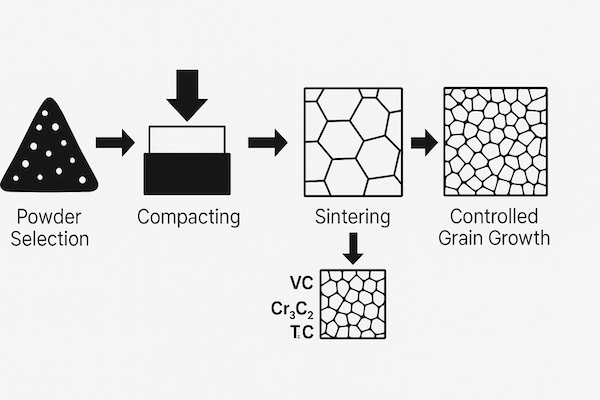
يقوم المصنعون بالتحكم في حجم الحبيبات بعناية باستخدام تقنيات تحضير المسحوق والتلبيد لأن:
تحسين الحبوب يحسن مقاومة التآكل والاحتفاظ بالحافة
توفر الحبوب الأكثر خشونة مقاومة أفضل للصدمات في الظروف المحملة بالصدمات
يضمن حجم الحبوب المتسق أداءً موحدًا للأداة
يؤثر حجم الحبيبات أيضًا على انكماش التلبيد والتسامحات النهائية
يعد موازنة حجم الحبيبات أمرًا بالغ الأهمية لتخصيص الأدوات لتطبيقات محددة - فإذا كانت دقيقة للغاية فقد تتسبب في تقطيع الأداة؛ وإذا كانت خشنة للغاية فقد تتسبب في تآكلها بسرعة كبيرة.
نمو الحبوب والمواد المضافة
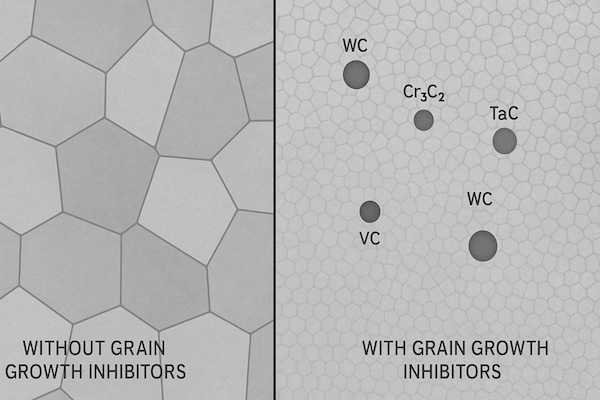
أثناء عملية التلبيد، تميل حبيبات WC إلى النمو بشكل طبيعي. ولمنع النمو المفرط والحفاظ على الخصائص المطلوبة، غالبًا ما يضيف المصنعون مثبطات نمو الحبيبات مثل:
كربيد الفاناديوم (VC)
كربيد الكروم (Cr₃C₂)
كربيد التنتالوم (TaC)
تعمل هذه الإضافات على تثبيت البنية الدقيقة وتساعد في الحفاظ على اتساق الأداء في ظل ظروف التشغيل أو القطع القاسية.
خاتمة
قد يكون حجم الحبيبات غير مرئي للعين المجردة، ولكن تأثيره على أدوات كربيد التنغستن عميق. من المثاقب الدقيقة فائقة الدقة إلى معاول التعدين المتينة، يُعد اختيار حجم الحبيبات المناسب أمرًا أساسيًا لتحقيق التوازن المثالي بين الصلابة والمتانة ومقاومة التآكل.
إن فهم حجم الحبيبات ليس مخصصًا للعلماء فقط، بل إنه مفتاح لتحسين أداء الأداة وضمان عمر خدمة أطول في الميدان.
